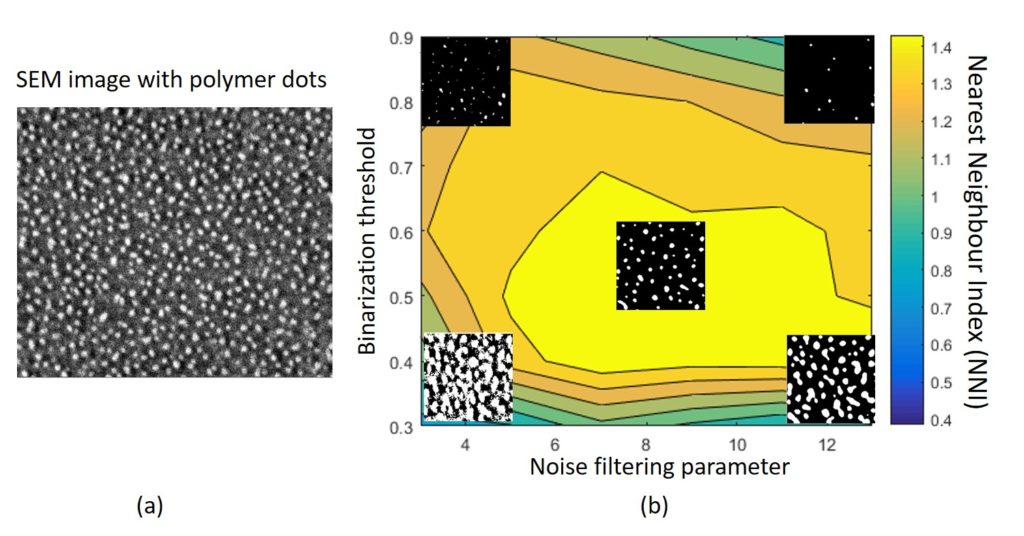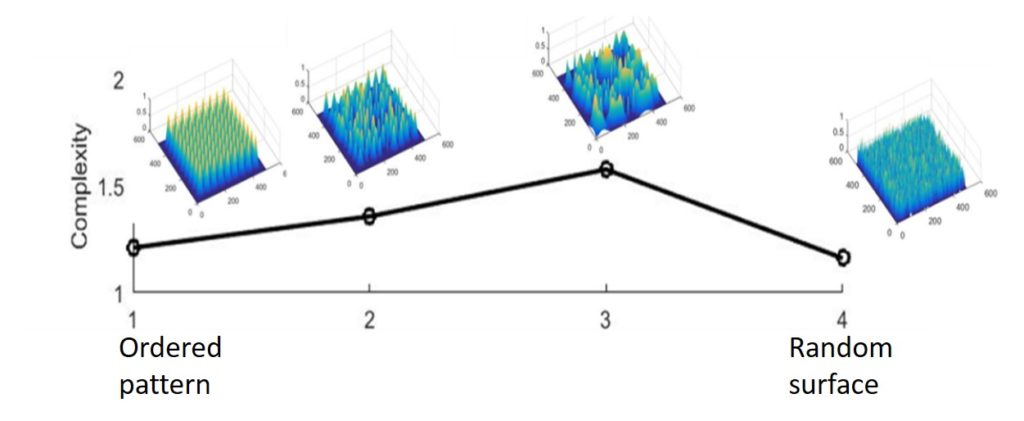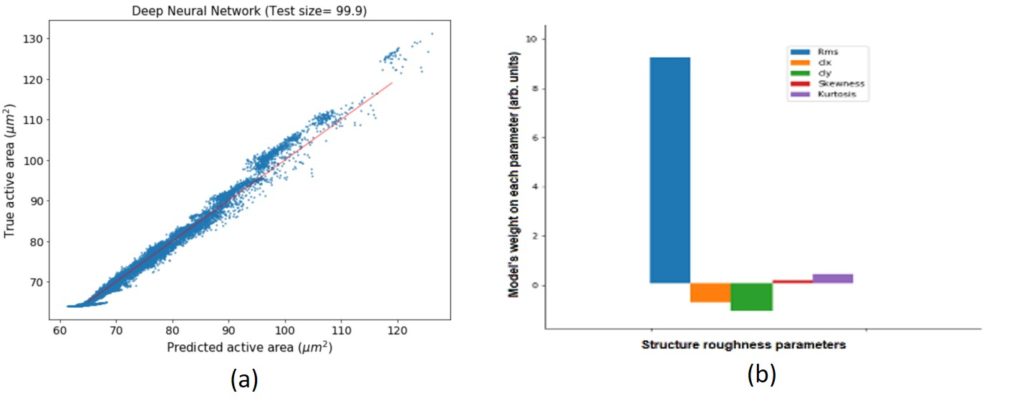Computational Nanometrology
In this activity, we focus on the development of mathematical and computational methods including machine learning techniques for the metrological characterization of nanostructure morphologies. The motivation is emanated from the extreme requirements of accuracy on nanoscale which cannot be covered by advances in microscopy hardware only and the increased complexity of nanomorphologies which demands for advanced methods of quantitative characterization. Since plasma technology is used in both well-defined nanopatterns and open (freeform) surfaces, this activity can be separated in two parts:
A. Nanometrology of patterned structures
Line Edge Roughness (LER) concerns the sidewall roughness of line/space patterns and is of primary importance in current sub-20nm semiconductor research and industry. During the last two decades, we have pioneered the metrology of LER with the development and application of novel mathematical and computational tools focusing on the spatial and scaling/frequency analysis of LER (including Height-Height Correlation Function (HHCF), Power Spectral Density (PSD), (multi)fractal analysis and the related parameters of the correlation length, roughness exponent and fractal dimension i.e. the widely accepted and used three-parameter model for LER characterization proposed by our group). Finally, we are a member of the initiative of SEMI standards for the redefinition of the protocol for LER measurement. Our research targets:
A.1 Accuracy issues, such as noise removal from Scanning Electron Microscope (SEM) images
LER is usually measured through the analysis of top-down Scanning Electron Microscope images. However, they suffer from the presence of noise which degrade the accuracy of LER measurements on nanoscale. In order to mitigate noise effects and control their impact, we have developed two strategies.
- Fourier analysis (Power Spectral Density, PSD) to decompose image noise contribution to LER and acquire unbiased results (see Fig.1) and
- machine/deep learning techniques for the identification of noise effects on the whole image (convolutional neural network) or the edge profile (Hidden Markov Models) and the consequent denoising of images (see Fig.2)
Additionally, we developed a computational modeling to generate computer synthesized grayscale images with controlled levels of noise and LER characteristics. These computer synthesized images imitate closely the real SEM images and are used for validation of PSD-based method and the training of the convolutional neural network and other machine learning models. (see Fig.3). Finally, we have focused on the pixelization effects of SEM images on LER measurement and proposed an approach based on mathematical analysis to remedy these effects and obtain the true LER values.
A.2 Completeness issues such as cross-line correlations, and placement errors
Recently, new challenges in LER metrology have emerged by advances in nanopatterning techniques. In order to address these:
- We developed a novel methodology (c-factor correlation function and length) to capture the cross-line correlations critical in patterns with high densities (small pitch) and those produced by Directed Self-Assembly and Multi-Patterning lithographies. (see Fig.4)
- We initiated a hierarchical approach for the mathematical characterization of a real pattern targeting the identification of the two scales (pitch and CD) defining the line patterns and the two directions (across and along line direction) that correlations and deviations can appear.
- We applied the multifractal analysis properly adapted in LER characterization. (see Fig.5)
We work on Edge and Pattern Placement Error and its relation with LER, targeting design rules of modern circuits taking LER into account.
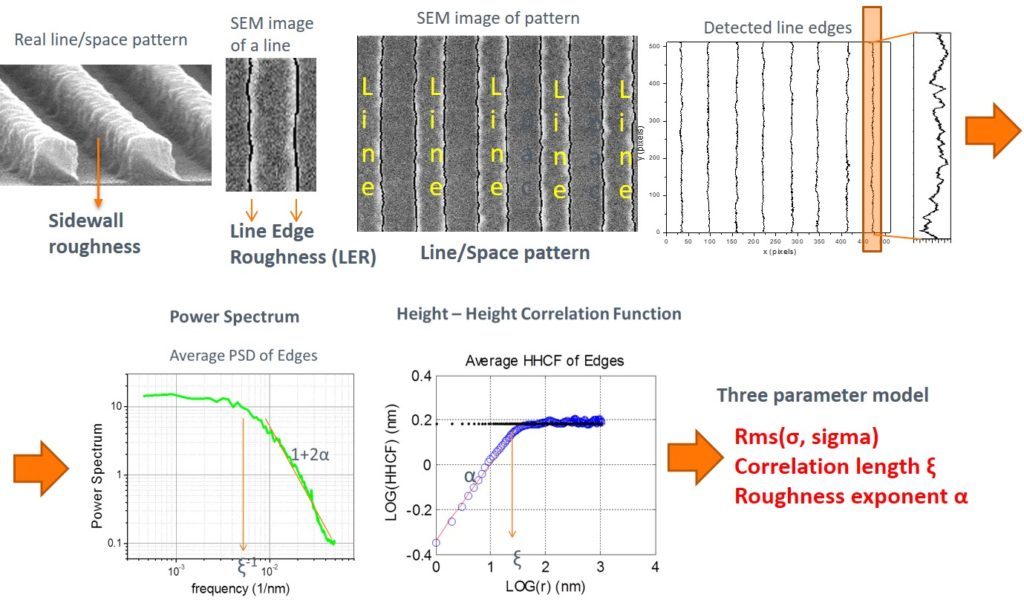
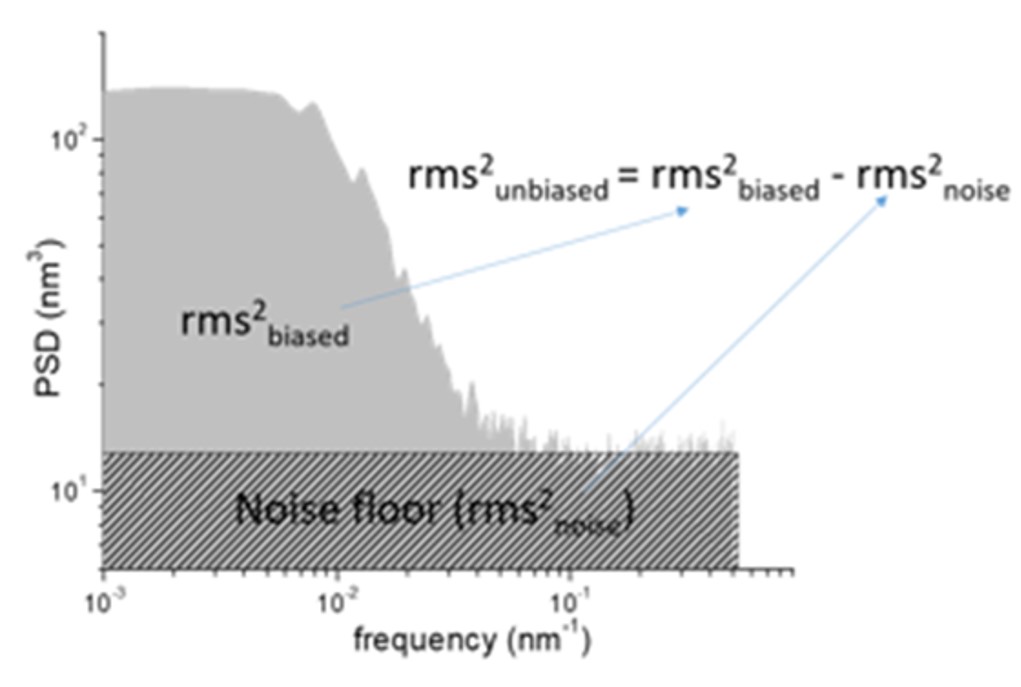
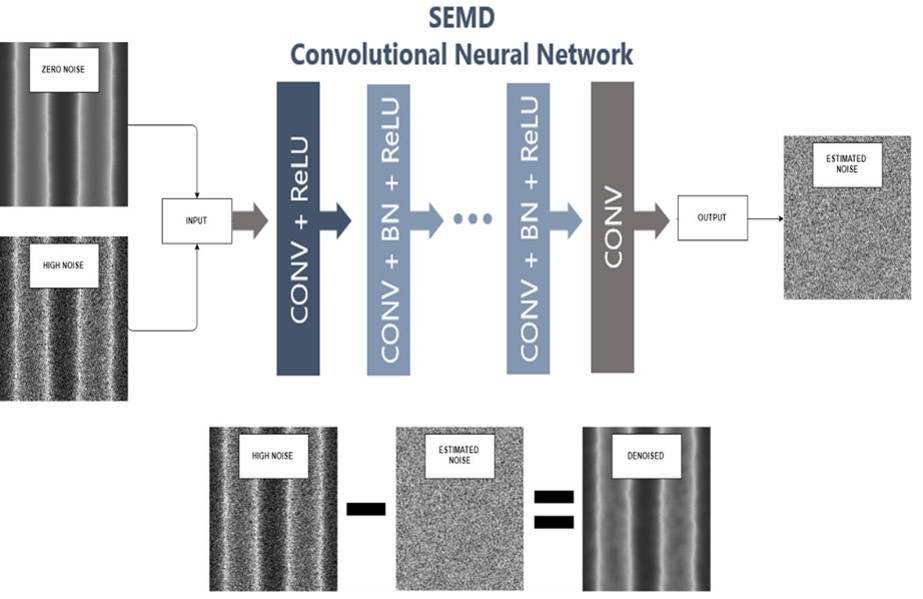
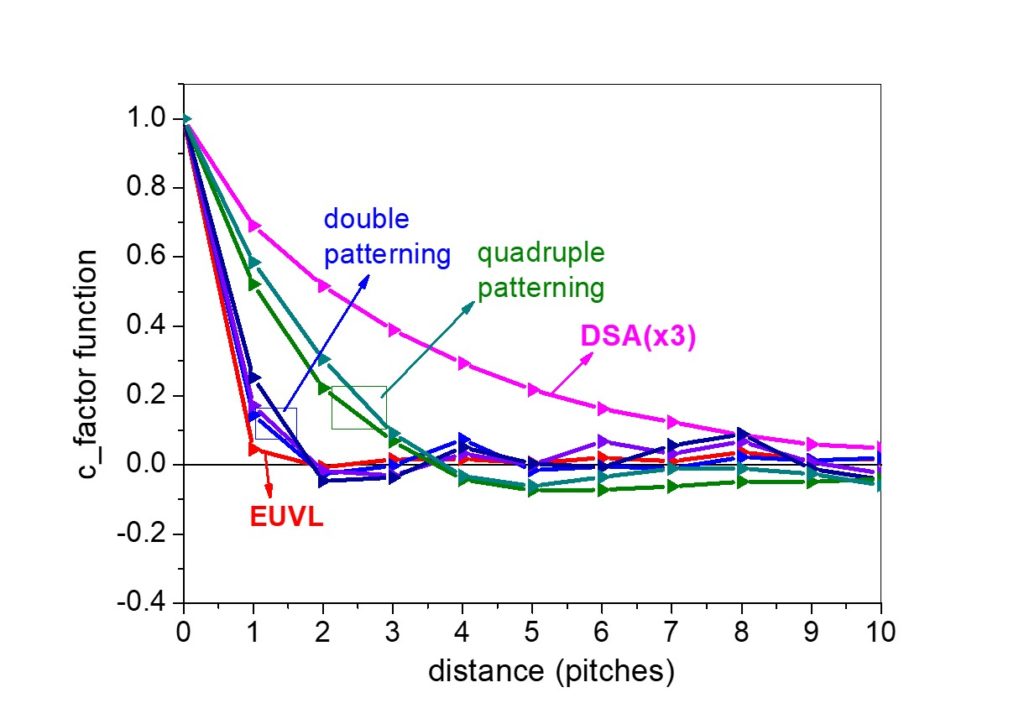
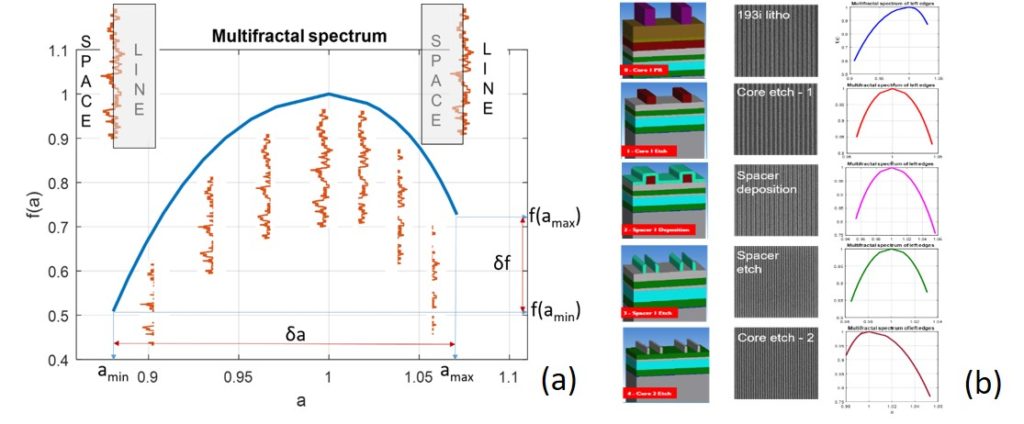
B. Nanometrology of open (freeform) complex surfaces
Plasma processing and surface engineering in general produce a rich variety and increased complexity of surface nanomorphologies. The aim of the second part of this activity is to cope with the challenge of the quantification of complexity and hierarchy in multiscale structures. To this end, we have developed and implemented methods inspired by
(a) Signal analysis (Fourier and Correlation analysis) for the identification and characterization of hierarchical surfaces (see Fig.6),
(b) Stochastic geometry (Point Pattern analysis), for the quantification of the extent of order/randomness of the positions of nanostructures (nanoparticles, nanodots, nanowires) on a substrate. Also, we investigated in detail the impact of image processing steps (denoising, binarization) on Nearest Neighbour Index in real SEM images with back-scattered and secondary electrons (see Fig.7).
(c) Complexity science (multiscale entropies, multifractality) for measuring the complexity of nanostructured surfaces using the concept of statistical/average symmetry. A symmetry-based analysis has also been developed to characterize the deviation of nanostructure morphologies from perfect translational and scaling symmetries (see Fig.8).(e) Machine learning (neural networks, random forests) in order to link surface morphology to surface functionality (see Fig.9). Artificial neural networks have also been used to evaluate the importance of tip effects in the accuracy of surface roughness measurement with Atomic Force Microscope (see Fig.10).

